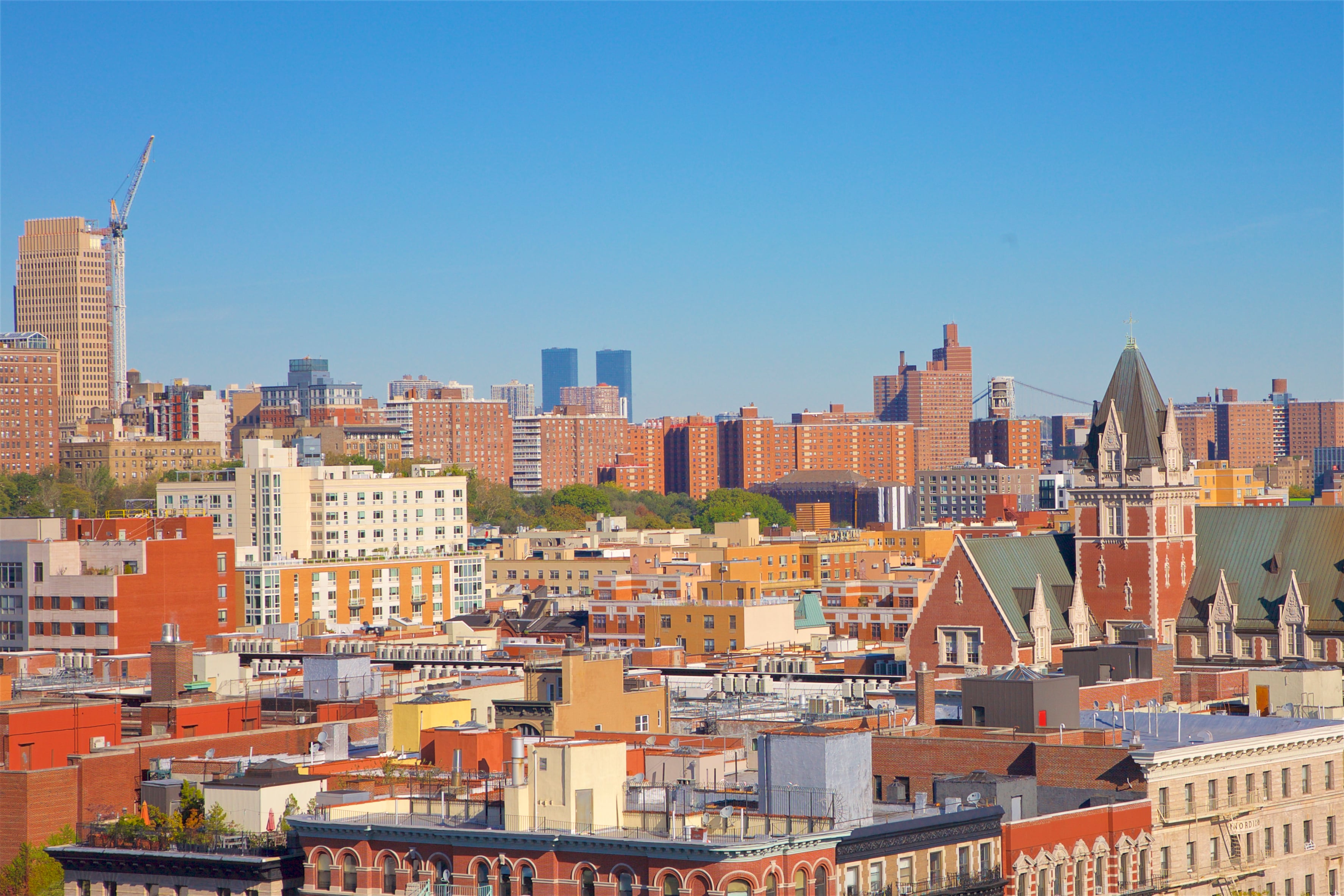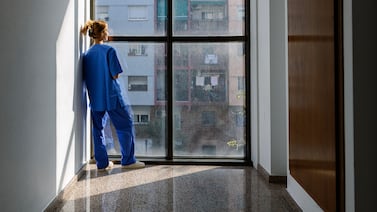Public health, explained: Sign up to receive Healthbeat’s free New York City newsletter here.
The New York City Department of Health and Mental Hygiene on Thursday reported a fourth death in the Legionnaires’ disease outbreak and identified for the first time the Central Harlem buildings with cooling towers that tested positive for Legionella bacteria.
The outbreak, which began last month, has resulted in 99 confirmed cases of Legionnaires’ disease, including 17 hospitalizations. The disease, a type of pneumonia, is contracted by inhaling vapor or mist containing Legionella bacteria, which grows in warm water.
The Health Department had previously identified cooling towers, which stand on building rooftops, as the focus of its investigation. In warm summer months, Legionella can grow quickly in cooling towers, which then spray bacteria-laden drops into the air. The agency has said that the water in Central Harlem remains safe to drink.
That’s because the cooling towers are separate from individual buildings’ plumbing systems.
The locations identified as testing positive for Legionella bacteria include city-run Harlem Hospital, a building on the CUNY campus, and the Health Department’s sexual health clinic in Harlem.
During a press conference on Thursday, acting health commissioner Dr. Michelle Morse cautioned that a positive Legionella test does not mean that a cooling tower is necessarily the source of the outbreak. And she noted that the outbreak may be slowing down.
“We’re optimistic that the risk of contracting Legionnaires disease today is dramatically lower than it was a few weeks ago,” she said.
Mayor Eric Adams acknowledged public anxiety surrounding the outbreak and sought to assure residents.
“I want to reassure everyone, the air is safe to breathe, and there is no risk to our drinking water or our water supply,” he said.
Here’s what to know about the outbreak.
Which buildings tested positive for Legionella?
Thursday’s press conference was held at NYC Health + Hospitals/Harlem, one of the 10 buildings where 12 cooling towers have tested positive for Legionella. The full list of locations is:
- BRP Companies, Lafayette Development LLC, 2239 Adam Clayton Powell Jr. Blvd.
- BVK, 215 W. 125th St.
- Commonwealth Local Development, 301 W. 124th St.
- CUNY – City College Marshak Science Building, 181 Convent Ave.
- Harlem Center Condo, 317 Lenox Ave.
- NYC Economic Development Corp., 40 W. 137th St.
- NYC Health Department Central Harlem Sexual Health Clinic, 2238 Fifth Ave.
- NYC Health + Hospitals/Harlem, 506 Lenox Ave.
- The New York Hotel Trades Council Harlem Health Center,133 Morningside Ave.
- Wharton Properties, 100 W. 125th St. (three of eight towers)
The cooling tower that tested positive at the Health Department’s sexual health clinic had been offline for planned maintenance during the weekend of July 26, at the start of the outbreak, Morse noted.
The Health Department had previously declined to identify the specific cooling tower locations, instead providing the ZIP codes connected to the investigation (10027, 10030, 10035, 10037, and 10039). Remediation, which involves adding treatment to eliminate the bacteria, has been completed on 11 of the 12 cooling towers, with the final one required to be completed by Friday.
Morse has defended the Health Department’s rationale for initially withholding the locations, arguing that the agency had not wanted to overly alarm people — or give others a false sense of security.
“We did not want people to think, ‘Well I don’t live there, I don’t have to worry,’” she said on Thursday. “That is actually the exact opposite response from what we wanted. What we wanted was for people in all five ZIP codes to be on high alert for developing any flu-like symptoms and to immediately seek care.”
Where does the outbreak stand?
As of Thursday afternoon, the Legionnaires’ outbreak has resulted in nearly 100 confirmed cases, including four deaths. But officials said they believe the outbreak is starting to slow down.
“We are watching the data extremely closely,” Morse said. “New cases have begun to decline. That indicates that the source of the bacteria has been contained.”
Still, officials urge anyone who works or lives in the identified ZIP codes who experiences flu-like symptoms to contact a health care provider immediately.
While most people exposed to Legionella do not get sick, some are at greater risk of illness. At-risk people include current or former smokers, people at least 50 years old, and those with health conditions including cancer, chronic lung disease, diabetes, kidney failure, liver failure, and weakened immune systems, according to the Centers for Disease Control and Prevention.
Symptoms of Legionnaires’ disease are typically a cough, fever, muscle aches, and chills, and can include headaches, fatigue, loss of appetite, confusion, or diarrhea, according to the Health Department.
How has the city responded to the outbreak?
When the outbreak began last month, the city tested water samples from cooling towers across the investigation zone through rapid PCR tests and culture tests, according to Morse. The rapid tests can quickly return results for dead and live bacteria, although only live bacteria can make people sick.
The rapid tests returned 11 cooling towers with positive results, and the associated buildings were directed to sanitize and remediate the towers within 24 hours. The Health Department recently received results of the culture tests, which identified a 12th cooling tower, which is being remediated by Friday, Morse said. Culture testing takes two weeks, but is the “gold standard” for Legionella testing since it detects the presence of live, illness-causing bacteria, according to the agency.
To further narrow in on the source of the outbreak, the agency is comparing the DNA from the 12 cooling towers with DNA samples from people who were sickened with Legionnaires’ disease.
New York City requires all building owners to register, maintain, and test their cooling towers, fluid coolers, and evaporative condensers. That requirement emerged from a 2015 Legionnaires’ outbreak that resulted in 16 deaths and was traced back to a single South Bronx cooling tower. The disease tends to emerge more frequently in neighborhoods with older populations and higher poverty rates, according to Health Department data.
Morse said the Health Department had worked to raise awareness of the outbreak by distributing fliers in the neighborhood, putting ads on LinkNYC, and spreading information through the radio, social media and news interviews.
City Council spokesperson Julia Agos criticized the city’s messaging around the Legionnaires’ outbreak and called for greater accountability.
“This mayoral administration has once again shown its weakness in clearly and effectively communicating with New Yorkers about critical health and safety threats,” she said in a statement. “Public health responses and communication are among the most essential responsibilities of government and continued failures put lives at risk.”
The City Council plans to hold an oversight hearing on the outbreak on Sep. 8.
Speaking at Thursday’s press conference, state Sen. Cordell Cleare, a Harlem Democrat, expressed condolences for the residents who died in the outbreak, and stressed the need for stronger preventative measures and increased monitoring of Legionella.
“It is, to me, very curious how this bacteria problem seems to always turn up in Black and brown communities,” she said. “We have to figure out some form of prevention. There are cooling towers all over this city. I don’t know what the disparity is that causes this, and that’s a great concern to me.”
Last week, she introduced a bill in the state Senate that would require more frequent testing and inspection of the city’s cooling towers.
Eliza Fawcett is a reporter covering public health in New York City for Healthbeat. Contact Eliza at efawcett@healthbeat.org .







